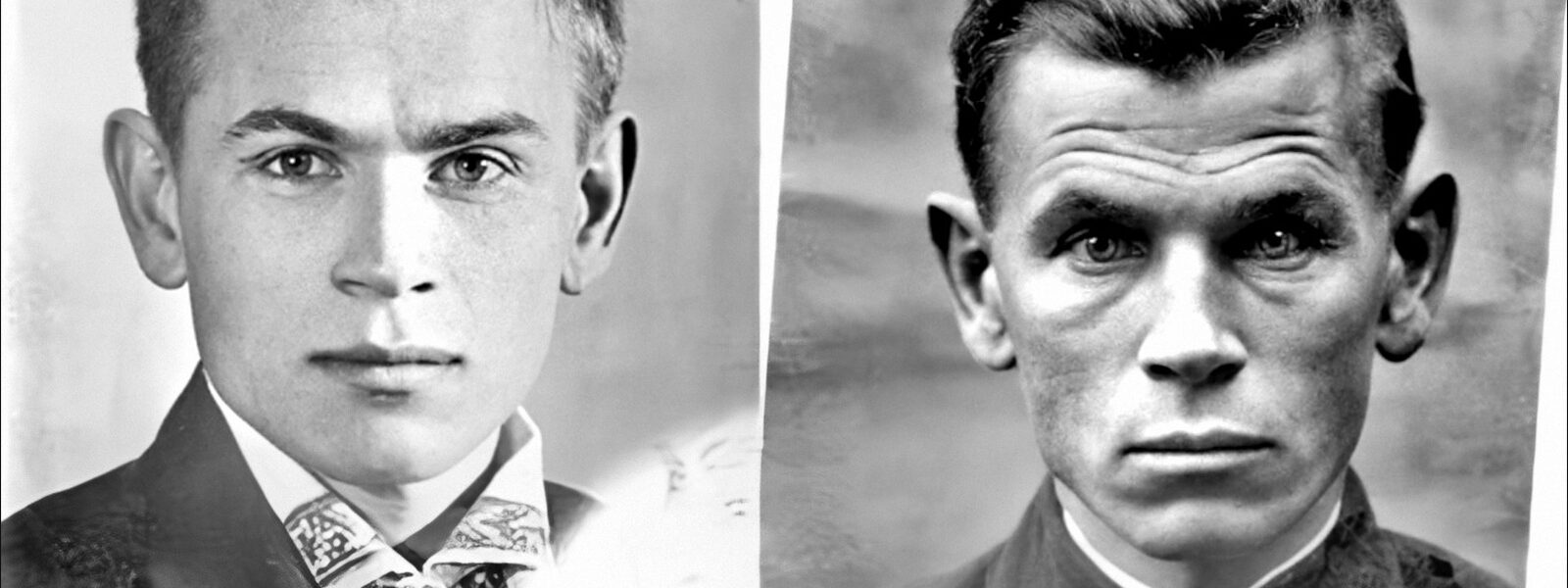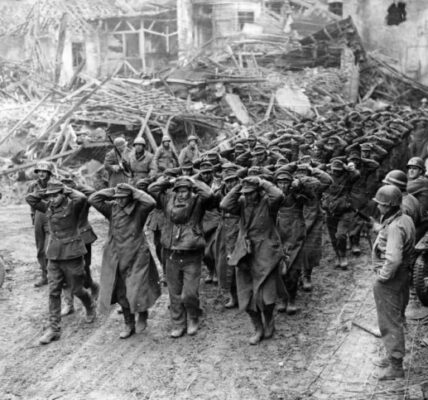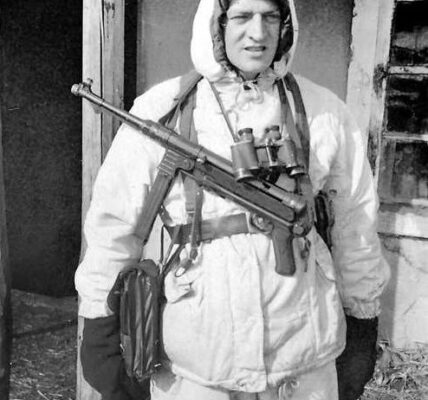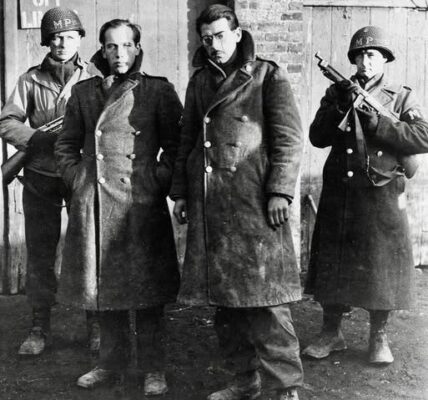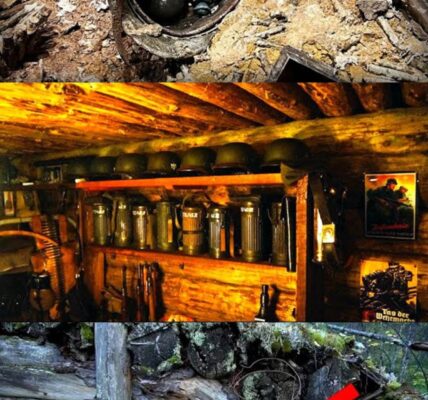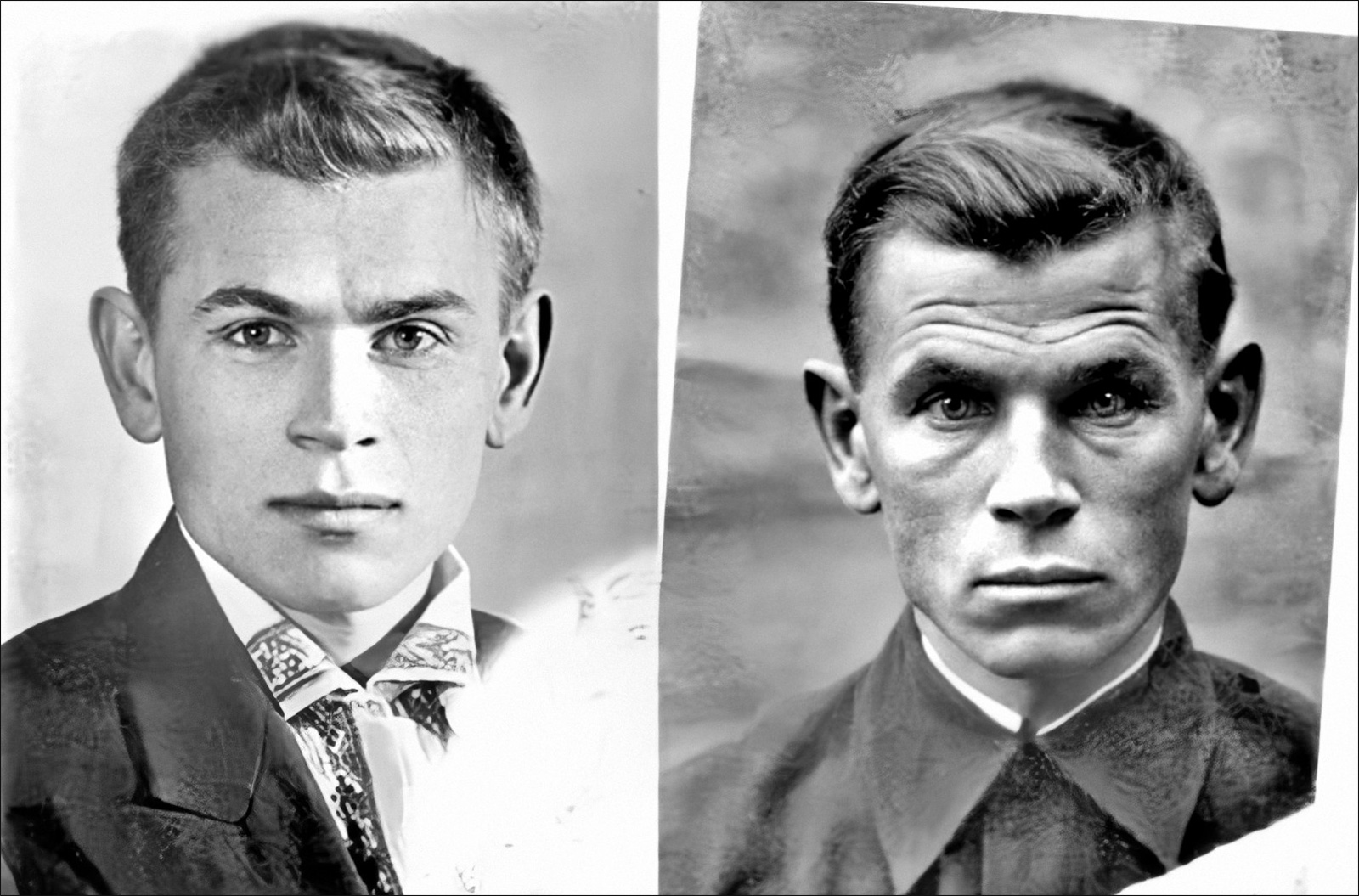
Yevgeny Stepanovich Kobytev: The human face after four years of war.
These two paintings are exhibited side by side in the Andrei Pozdeev Museum. The museum’s caption reads: “(Left) The artist Eugene Stepanovich Kobytev on the day he left for the front in 1941. (Right) When he returned in 1945.” This is the human face after four years of war. The first painting looks at you, the second looks through you.
In 1941, he was a young man about to begin his creative life as an artist when Germany attacked the Soviet Union and he was drafted into the army. Four years later, the difference in his face is remarkable.
A thin and tired face, deep wrinkles, a tormented look – this man was completely changed after four years of experiencing a war without rules on the Eastern Front.
Yevgeny Stepanovich Kobytev was born on December 25, 1910, in the village of Altai. After graduating from pedagogical school, he worked as a teacher in rural areas of Krasnoyarsk.
His passion was painting, especially portraits and panoramas of everyday life. His dream of higher artistic education came true in 1936 when he began studying at the State Art Institute in Kyiv, Ukraine.
In 1941, he graduated from the art institute with honors and was ready for a new life as an artist. However, all his dreams were shattered on June 22, 1941, when Nazi Germany attacked the Soviet Union.
The new artist volunteered to become a soldier, joining one of the Red Army’s artillery regiments. The regiment was engaged in a fierce battle to defend the small town of Pripyat, located between Kyiv and Kharkiv.
In September 1941, Kobytov was wounded in the leg and taken prisoner of war.
He ended up in a notorious German concentration camp in Khorol, called the “Khorol Pit” (Dulag No. 160). Approximately 90,000 prisoners of war and civilians died there.

The Khorol camp was built on the site of a former brickworks and had only a single barrack. It was half-ruined and rested on piles leaning to one side. It provided the only shelter from the autumn rains and storms.
Only a few of the 60,000 prisoners could squeeze in there. The rest had no barracks. In the barracks, people stood close together. They gasped from the stench and fumes, drenched in sweat.
In 1943, Kobytev managed to escape from captivity and rejoin the Red Army. He participated in various military operations in Ukraine, Moldova, Poland, and Germany.
After the end of the Second World War, he was awarded the Hero of the Soviet Union medal for his outstanding military service during the battles for the liberation of Smila and Korsun in Ukraine.
However, the High Command refused to award him the “Victory over Germany” medal because his military career had been “spoiled” by his captivity.

Yevgeny Stepanovich Kobytev in the 1960s.
In the postwar period, Yevgeny Stepanovich Kobytev was elected a deputy of his city council and was responsible for the region’s cultural activities. He died in 1973.

In addition, he exhibited his works, especially in the places where he himself was a prisoner, refugee, and soldier, so that the locals could recognize themselves, but also their tormentors, in his pictures.
The thousand-meter-long view
If you read about wars and their effects on soldiers, you may have come across the “Thousand Yard Stare.”
In many cases, it’s the first sign of post-traumatic stress disorder (PTSD). The Oxford Dictionary defines it as “a blank or unfocused stare into the distance, considered characteristic of a war-weary or traumatized soldier.”
The phrase originated with Time magazine’s publication of a painting titled “Marines Call It That 2,000 Yard Stare,” painted by artist and World War II correspondent Tom Lea, although it wasn’t explicitly named that. The painting is a 1944 portrait of a Marine at the Battle of Peleliu in Palau (Pacific Ocean).
The most noticeable signs in a person suffering from PTSD are introversion and joylessness.
This condition is characterized by frequent, unwanted memories that repeatedly relive the triggering event. People with this syndrome are unable to experience pleasure in things that once brought them joy.
They avoid the company of others and become more passive than before. They want to avoid anything that might trigger memories of the traumatic event.
A person with PTSD might walk away from a conversation and appear distant and withdrawn. This is known among soldiers as the “thousand-meter stare.” This is a sign that unpleasant memories have returned to haunt them.
Artwork by Evgeny Stepanovich Kobytev
After the war, Kobytev returned to being an art teacher. Like many who suffered as he did, the rest of his life was influenced by the war.
He had nightmares and woke up screaming at night. But his art helped him, and he eventually wrote a book about his experiences as a prisoner of war and soldier.
“In difficult moments of life, read this book” (the inscription on the title page of the book “Khorolskaya Yama” by ES Kobytev, addressed to her daughter Vera Kobyteva).

Auto portrait.























